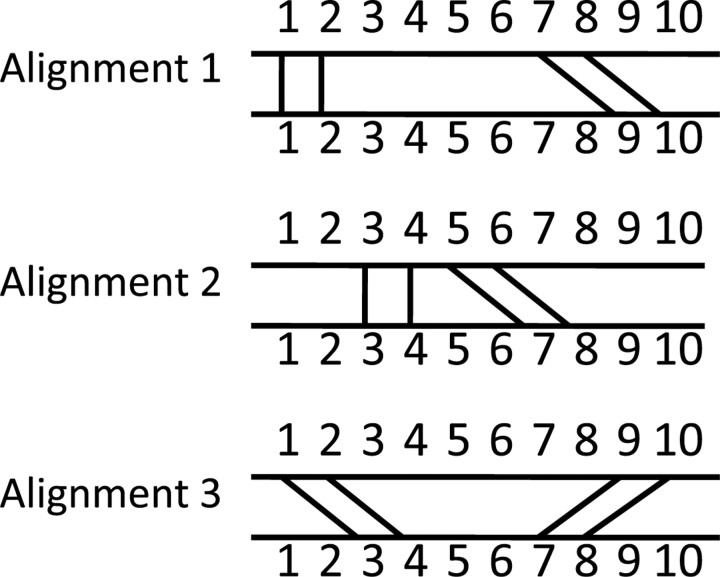Fig. 1.
Illustration of compatibility of alignments. Each vertex represents a four-nucleotide alignment, as in Alignment 1, Alignment 2 and Alignment 3 above. An alignment formed by merging Alignments 1 and 3 is neither a uniquely assigned nor a well-ordered alignment, while the merging of Alignments 2 and 3 violates the uniquely assigned criterion. Only alignments 1 and 2 can be merged to form a valid alignment, namely the aligning of nucleotides 1, 2, 3, 4, 5, 6, 7, 8 in the first structure with nucleotides1, 2, 3, 4, 7, 8, 9, 10 in the second structure, respectively.

